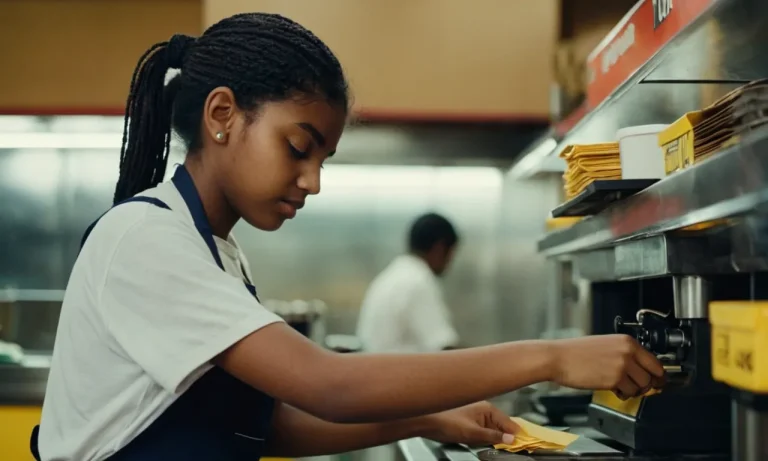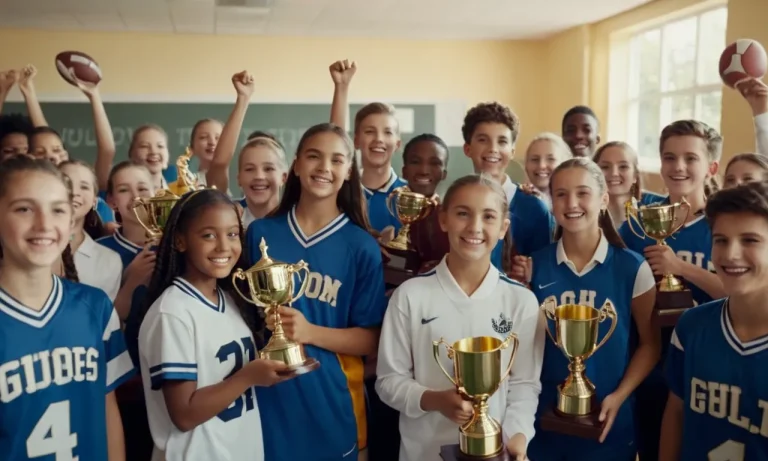Snacking has become an integral part of school life, with students often seeking quick bites to fuel their energy levels during long academic days. However, the legality of selling snacks within school premises has been a subject of debate, raising concerns about health, safety, and regulatory compliance.
If you’re short on time, here’s a quick answer to your question: Selling snacks in school is generally legal, but it is subject to various regulations and policies that vary across different regions and educational institutions.
These regulations aim to promote student health, ensure food safety, and maintain a conducive learning environment.
In this comprehensive article, we will delve into the nuances of selling snacks in schools, exploring the legal framework, health considerations, and best practices. We will also examine the potential benefits and drawbacks of allowing snack sales on school grounds, providing a well-rounded perspective on this topic.
Legal Framework and Regulations
When it comes to selling snacks in schools, there are several layers of legal frameworks and regulations that must be considered. These regulations are put in place to ensure the health and well-being of students, as well as to promote a safe and conducive learning environment.
Federal and State Laws
At the federal level, the Smart Snacks in School regulations, established by the U.S. Department of Agriculture (USDA), set nutritional standards for all foods and beverages sold to students during the school day.
These regulations apply to items sold in school vending machines, snack bars, and a la carte lines. Additionally, some states have their own laws and regulations that further restrict the types of snacks and beverages that can be sold in schools.
School District Policies
Many school districts have their own policies regarding the sale of snacks and beverages on school grounds. These policies often align with or exceed the federal and state regulations. Some districts may prohibit the sale of certain types of snacks altogether, while others may have specific guidelines for portion sizes, nutrient content, and when and where snacks can be sold.
Nutritional Guidelines
The Smart Snacks in School regulations set specific nutritional guidelines for snacks sold in schools. These guidelines include limits on calories, fat, sugar, and sodium content. For example, snacks must have no more than 200 calories per item, and beverages must have no more than 20 ounces for non-milk beverages.
According to the USDA, these guidelines were implemented to help combat childhood obesity and promote healthier eating habits among students.
Food Safety Standards
In addition to nutritional guidelines, schools must also adhere to food safety standards when selling snacks. These standards include proper food handling, storage, and preparation practices to prevent foodborne illnesses.
Many states and school districts require food safety certifications for individuals involved in the sale or preparation of snacks on school grounds. The Food Safety Modernization Act (FSMA) also sets federal food safety standards that schools must follow.
It’s important to note that the regulations and policies surrounding the sale of snacks in schools can vary from state to state and even from district to district. Schools and individuals selling snacks should consult with their local authorities to ensure compliance with all applicable laws and regulations.
Failure to do so could result in fines or other penalties.
Health Implications of Snack Sales
Childhood Obesity and Nutrition
Selling unhealthy snacks in schools can contribute to the growing problem of childhood obesity. According to the Centers for Disease Control and Prevention (CDC), the prevalence of obesity among children and adolescents aged 2-19 years has tripled since the 1970s.
Unhealthy snacks are often high in calories, sugar, and unhealthy fats, which can lead to weight gain and other health issues. By allowing the sale of these snacks, schools may inadvertently promote poor dietary habits that can have long-lasting consequences for children’s health.
Allergies and Dietary Restrictions
Many children have food allergies or dietary restrictions, such as gluten intolerance or lactose intolerance. Selling snacks without proper labeling or oversight can put these children at risk of consuming foods that could trigger allergic reactions or cause discomfort.
Schools have a responsibility to ensure the safety of all students, and allowing the sale of unregulated snacks can undermine this responsibility. It’s crucial for schools to be aware of students’ dietary needs and take appropriate measures to ensure their well-being.
Impact on Academic Performance
Unhealthy snacks can also impact a child’s ability to focus and perform well academically. Foods high in sugar and unhealthy fats can cause energy crashes and difficulty concentrating, which can negatively affect a student’s academic performance.
On the other hand, healthier snack options, such as fruits, vegetables, and whole grains, can provide sustained energy and support cognitive function. By promoting healthier snack options, schools can create an environment that fosters better learning and academic success.
Promoting Healthy Eating Habits
Schools play a crucial role in shaping children’s eating habits and attitudes towards food. By allowing the sale of unhealthy snacks, schools may inadvertently send the message that these foods are acceptable or even desirable.
Instead, schools should promote healthy eating habits by offering nutritious snack options and educating students about the importance of a balanced diet. This can help children develop positive relationships with food and establish healthy habits that can last a lifetime.
According to the American Academy of Pediatrics, developing healthy eating habits early on can reduce the risk of chronic diseases like obesity, heart disease, and diabetes later in life. 😊
While selling snacks in schools can be a source of revenue, the potential health implications for students should be carefully considered. By prioritizing nutrition and promoting healthy eating habits, schools can create a positive and supportive environment that fosters the overall well-being of their students.
Potential Benefits of Snack Sales
Fundraising Opportunities
Selling snacks in school can be an excellent fundraising opportunity for various school activities and events. From bake sales to concession stands during sporting events, these initiatives can generate significant revenue for clubs, organizations, and extracurricular activities.
According to a report by Education Week, schools across the United States raise billions of dollars annually through fundraising efforts, with snack sales being a popular and lucrative option. 🎉
Student Entrepreneurship
Selling snacks in school can also foster a sense of entrepreneurship among students. By allowing them to participate in the planning, marketing, and sales process, they can develop valuable skills such as budgeting, customer service, and business management.
This hands-on experience can be an incredible learning opportunity and may even inspire some students to pursue entrepreneurial endeavors in the future. 👍
Convenience for Students and Staff
Let’s be honest, hunger pangs can strike at any time, and having snack options readily available on campus can be a lifesaver! 😂 For students and staff alike, having the convenience of purchasing snacks during breaks or after-school activities can be a great time-saver and prevent the need to leave campus.
This not only provides a service to the school community but can also promote a sense of community and camaraderie.
Revenue Generation for School Activities
Beyond fundraising, snack sales can generate revenue that can be directly reinvested into various school activities and programs. From purchasing new equipment for sports teams to funding field trips or enhancing classroom resources, the proceeds from snack sales can make a significant impact on the quality of education and extracurricular experiences offered by the school. According to a study by the National Park Service, schools that actively engage in fundraising activities, including snack sales, can generate substantial amounts of money to support their programs and initiatives.
While selling snacks in school may seem like a simple endeavor, the potential benefits are far-reaching. From fostering entrepreneurial skills to generating revenue for school activities, these initiatives can have a positive impact on the overall educational experience and community spirit. 🎉
Best Practices for Responsible Snack Sales
Establishing Snack Policies
When it comes to selling snacks in schools, it’s crucial to establish clear and comprehensive policies to ensure compliance with local, state, and federal regulations. These policies should outline the types of snacks permitted for sale, portion sizes, nutritional guidelines, and any restrictions on when and where snacks can be sold.
According to the Centers for Disease Control and Prevention (CDC), 90% of schools nationwide have implemented policies regulating the sale of snacks and beverages. However, the specifics of these policies can vary widely across districts and states.
Involving Stakeholders
The development and implementation of snack policies should involve a diverse group of stakeholders, including school administrators, teachers, parents, students, and health professionals. By involving these stakeholders, schools can ensure that the policies are tailored to the specific needs and preferences of their community while also promoting healthy eating habits.
A study by the Alliance for a Healthier Generation found that schools with strong parental and community involvement were more successful in implementing and sustaining healthy snack policies.
Monitoring and Enforcement
Once snack policies are in place, it’s essential to monitor and enforce them consistently. This may involve regular audits of snack offerings, training for staff and volunteers involved in snack sales, and clear consequences for non-compliance.
According to a report by the USDA’s Food and Nutrition Service, 😊 effective monitoring and enforcement can lead to a 20% increase in the availability of healthier snack options in schools.
Promoting Healthy Alternatives
While regulating snack sales is important, it’s equally crucial to promote and encourage the consumption of healthy alternatives. This can involve educational campaigns, taste tests, and partnerships with local farmers or food vendors to provide fresh, nutritious snacks.
The USDA’s Team Nutrition initiative offers resources and guidance for schools looking to promote healthy eating habits among students. According to their data, schools that actively promote healthy snacks see a 15% increase in student consumption of fruits and vegetables. 👍
By following these best practices, schools can navigate the complexities of snack sales while prioritizing the health and well-being of their students. It’s a win-win situation – students get access to tasty and nutritious snacks, and schools can rest assured that they’re complying with regulations and promoting a positive learning environment.
🎉
Conclusion
The legality of selling snacks in schools is a multifaceted issue that requires careful consideration of various factors, including legal regulations, health implications, and potential benefits. While snack sales can provide convenience and generate revenue, it is crucial to prioritize student well-being and promote healthy eating habits within the school environment.
By adhering to relevant laws, nutritional guidelines, and food safety standards, schools can strike a balance between allowing snack sales and ensuring the overall well-being of their students. Involving stakeholders, establishing clear policies, and promoting healthy alternatives can contribute to a responsible approach to snack sales in schools.
Ultimately, the decision to permit or restrict snack sales should be made with the best interests of students in mind, fostering a supportive and nurturing learning environment that encourages healthy choices and academic success.






